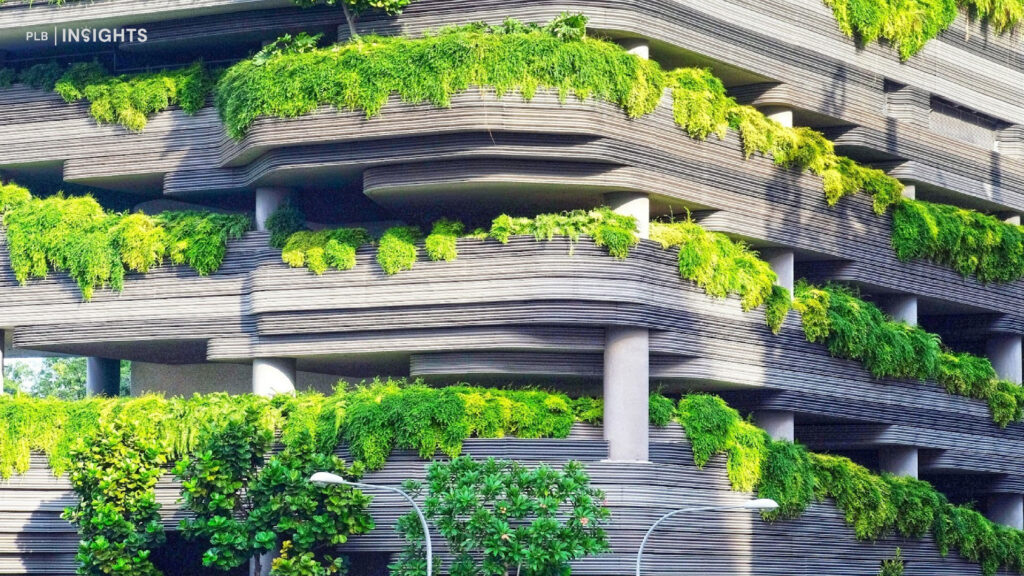
Singapore remains an ever-evolving city that is at the forefront of urban living. As the demand for real estate remains robust, there is a growing recognition of the importance of wellness and sustainability for individuals, community, and for the environment at large, integrated into development practices. By prioritising elements that enhance the physical and mental wellbeing of individuals along with eco-friendly designs, Singapore’s property market can continue to evolve and transform.
In this article, we are going to delve into the ways Singapore is committed to merging wellness and sustainability into the real estate sector, and how this can create a future of vibrant communities that prioritise health, wellness, and ecological integrity – ultimately resulting in a more harmonious urban environment.
The Importance of Wellness and Sustainability
Wellness in any sector goes beyond physical health. It encompasses emotional, mental and social well-being. This holistic approach to wellness recognises the importance of having an environment that positively influences individuals and promotes a lifestyle that nurtures health and happiness. Moreover, living spaces that are designed with the wellness of residents in mind can lead to improved mental well-being, lowered stress, and enhanced productivity. Having access to nature and community spaces on top of accessibility and convenience many seek can also cultivate a sense of belonging.
Sustainability in real estate places an emphasis on minimising ecological footprints through several factors including energy-efficient design elements, using eco-friendly materials and managing resources responsibly. With these efforts, developers and residents can contribute towards conserving the environment and the global effort to combat climate change.
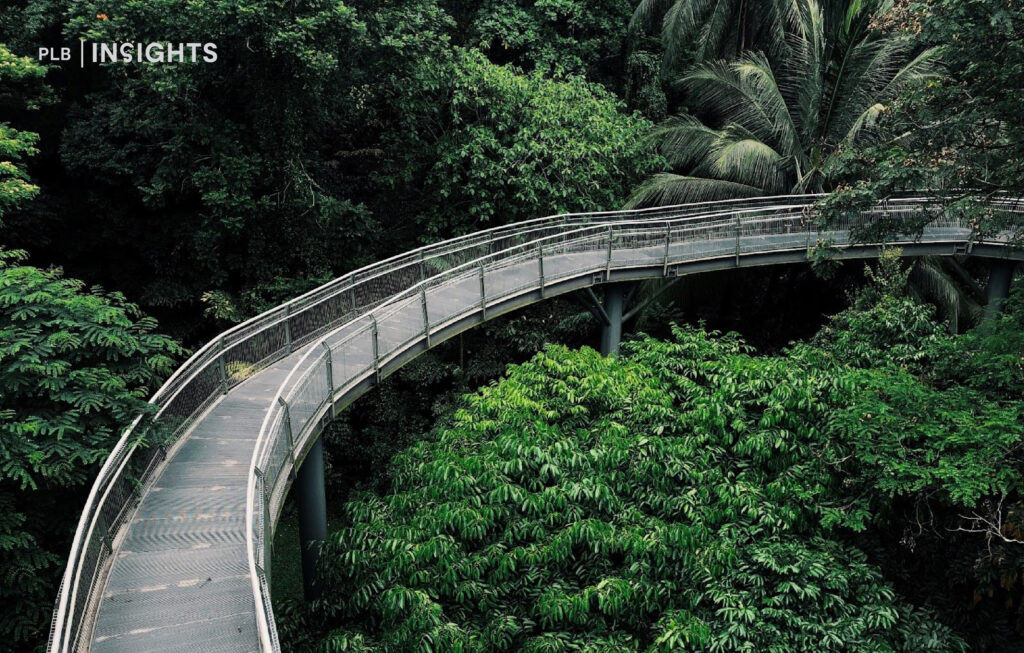
Sustainable buildings may also result in lower operational costs due to their energy-efficient nature and reduced waste. Moreover, as the demand for eco-friendly living increases, properties that prioritise these concepts and practices have the potential to become more attractive investment choices that benefit developers and residents alike.
Prioritising wellness and sustainability can lead to developments that offer residents cleaner air, quieter spaces in the midst of city living, increased access to nature and recreational areas – factors that contribute to a more wholesome, high quality of life.
Embracing a holistic vision for Singapore’s property market is vital for building a sustainable future where urban living not only enhances our well-being today but also preserves the environment for future generations.
Government Policies and Initiatives
As part of the Singapore Green Plan 2030, ambitious and concrete targets were set by the Government to advance Singapore’s national agenda on sustainable development. Some of the key targets that were set include reducing energy consumption in existing HDB towns by 15% and greening 80% of Singapore’s buildings by 2030.
Singapore’s commitment to integrating wellness and sustainability into its real estate development is strongly supported by several frameworks and initiatives. Let’s go over some of them.
Green Towns Programme and the Smart HDB Town
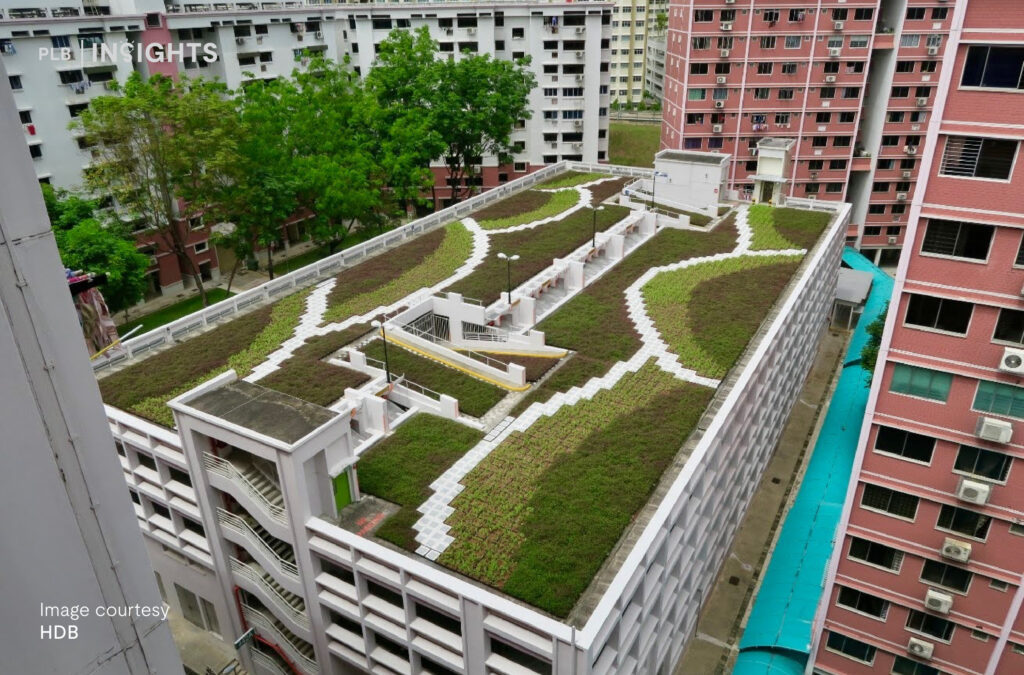
To achieve the target of reducing energy consumption in existing Housing and Development Board (HDB) towns by 15% by 2030, HDB has introduced the Green Towns programme. The Green Towns Programme is a 10-year plan to make HDB towns more sustainable and liveable. The programme focuses on five key areas: Reducing Energy Consumption, Recycling Rainwater, Reducing Waste, Promoting Green Commute, and Cooling HDB Towns. A major initiative under this programme is the installation of additional solar panels, with HDB targeting a solar power generation capacity of 540 MWp by 2030, amounting to the energy required to power 135,000 four-room HDB flats in a year.
In addition, the Smart HDB Town framework is an initiative by the HDB that is aimed at creating public housing that integrates smart technology and data to enhance the quality of life for residents while promoting efficient resource management and environmental sustainability.
The framework focuses on 5 key areas to ensure HDB towns are sustainable and offer a high quality of life for residents through smart technology: Smart Planning, Smart Environment, Smart Estate, Smart Living and Smart Community.
Zero Waste Master Plan
Singapore’s Zero Waste Master Plan is aimed at reducing waste and promoting the efficient use of resources across the nation. First launched in 2019 by the Ministry of the Environment and Water Resources (MEWR), the plan falls under the country’s broader goal of achieving a circular economy. This, of course, does impact the real estate sector in Singapore as it encourages developers to adopt design principles that minimise waste during construction and also integrate enhanced waste management systems that can facilitate composting and recycling.
BCA’s Green Mark Certification
Launched in 2005 by the Building and Construction Authority (BCA), the Green Mark Certification is a rating system that evaluates a building’s environmental impact and performance. The framework provides guidelines for assessing the environmental performance of buildings in Singapore to promote best practices in construction and the operations, as well as the use of sustainable designs in buildings.
Buildings are typically evaluated based on a range of criteria including energy efficiency, water efficiency, materials and resources that go into the construction process, sustainable site planning and the quality of the environment indoors (lighting and ventilation).
The Green Mark Certification is awarded at three different levels – Green Mark Certified, Green Mark Gold and Green Mark Platinum. Each level reflects the degree of sustainability achieved against the criteria, from having basic compliance with the criteria for sustainability to maintaining exceptional and consistent performance in innovative sustainability practices.
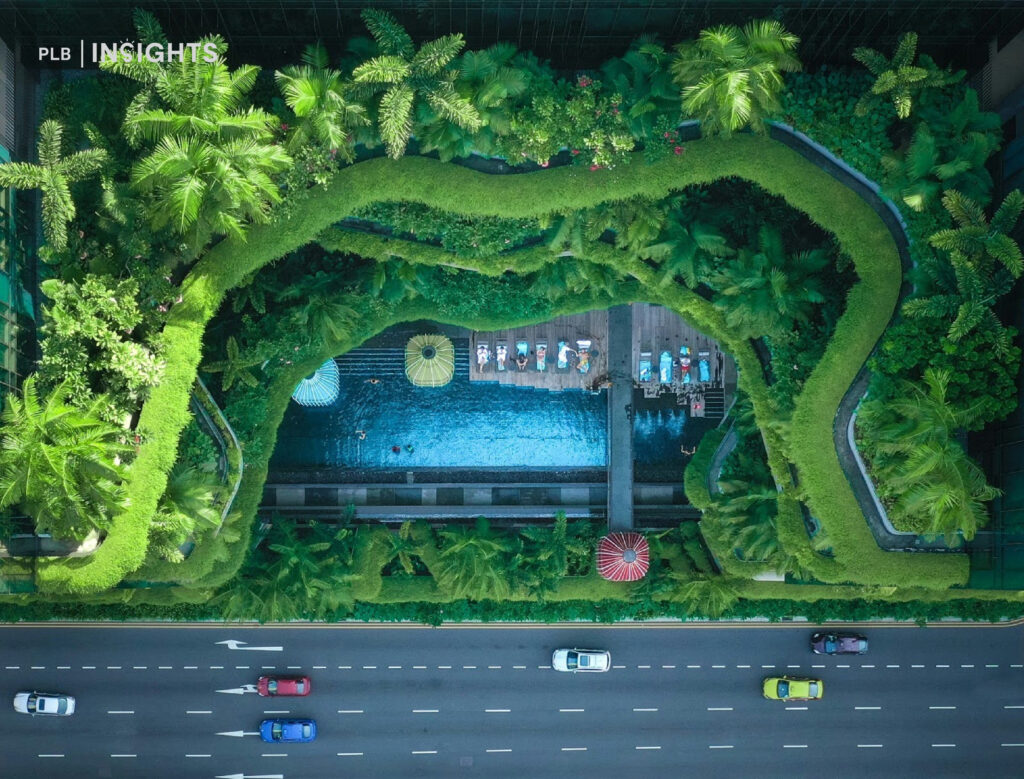
Mandatory Energy Improvement (MEI) Regime
On September 10 2024, a new requirement for highly energy-intensive buildings was passed by the parliament. Under the Mandatory Energy Improvement (MEI) regime, buildings that are commercial, institutional, healthcare facilities, and recreational and sports centres are required to assess their energy use and carry out changes that reduce the energy consumption. The new MEI regime is set to be effective in the third quarter of 2025.
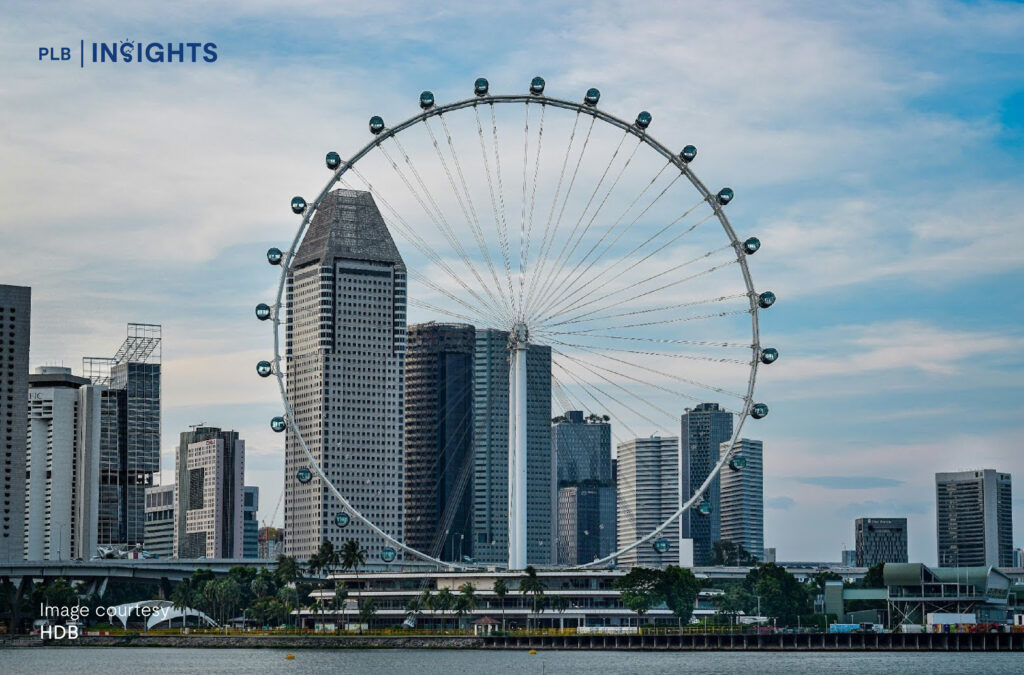
Innovations in Design and Construction: Developments in Singapore
The integration of wellness and sustainability in Singapore’s property market is illustrated by several developments that make use of innovative designs and construction practices. Let’s go over some of these developments.
Marina One Residences
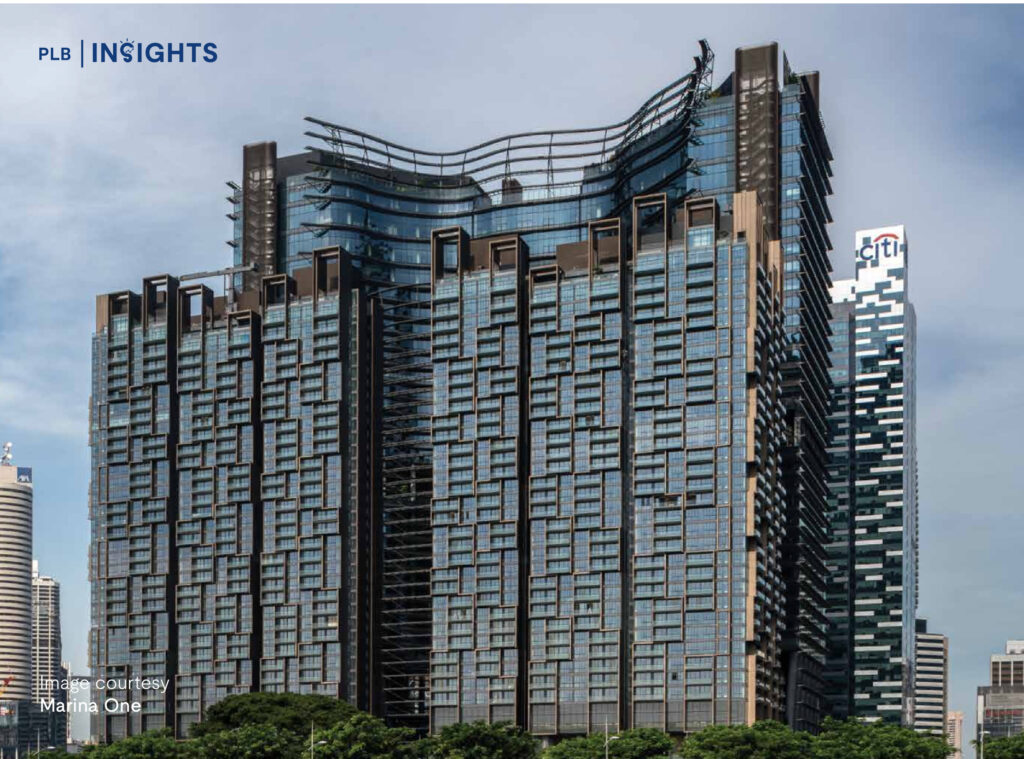
Completed in 2018, Marina One Residences is a 99-year leasehold mixed-use condominium comprising a total of 1,042 units in the Marina Bay area. The development offers a wide range of amenities and facilities including several pools, a fitness centre, a wellness sanctuary, a children’s play area and so much more. As it is located in a prime area, Marina One Residences offers residents easy access to a wide range of shopping, dining, entertainment and recreational options on top of all the essential amenities and facilities.
What makes the condo development stand out in terms of wellness and sustainability, however, is “The Green Heart” biodiversity garden and its sustainability practices that ensure Marina One Residences is energy-efficient.
“The Green Heart” Biodiversity Garden:
The Green Heart is a central garden that spans multiple levels and contains a variety of flora and fauna that creates a vibrant natural environment. It also includes several communal areas for residents to relax and socialise. Moreover, the garden features a 13-metre high waterfall and pathways to walk through the garden.
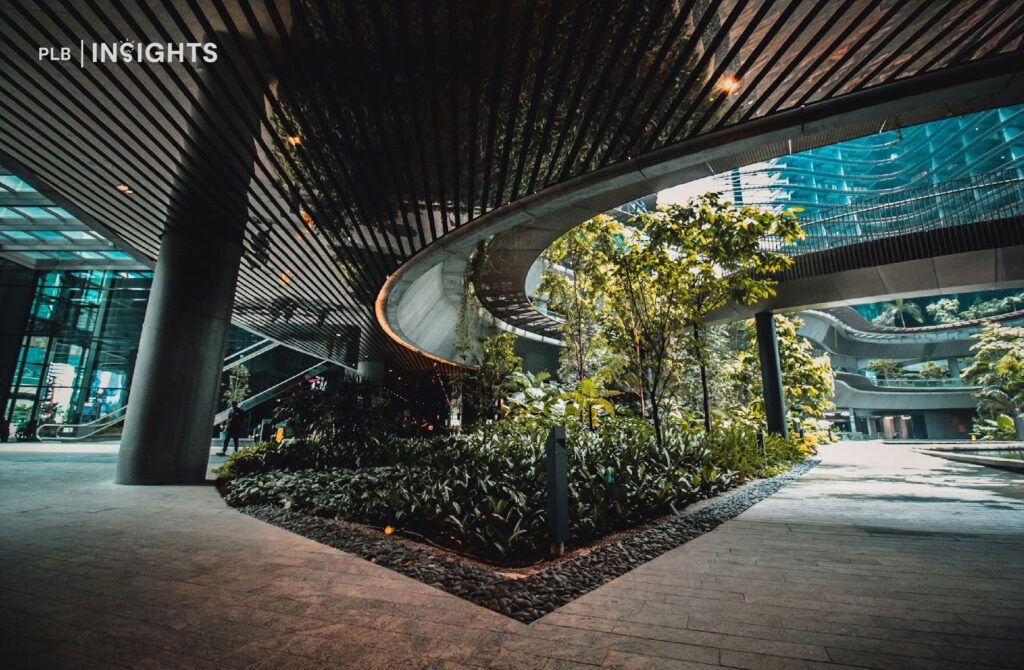
Green Features:
Marina One Residences has several green features that make it energy-efficient, including optimised building orientations that reduce heat and glare by over 20%, the use of motion sensors and LED lights, electric vehicle charging stations and direct access to 4 MRT lines. Additionally, the development has BCA’s Green Mark Platinum Certification and is LEED Platinum pre-certified.
Punggol Northshore
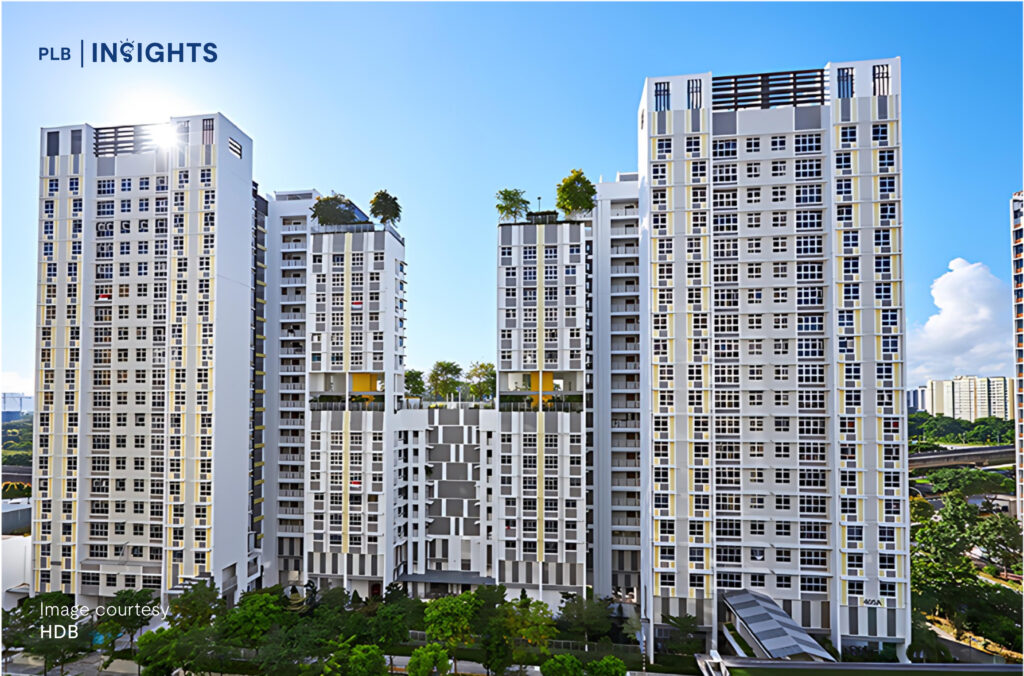
Punggol Northshore is HDB’s first smart and sustainable district with an integration of smart technology to enhance the quality of life of its residents while remaining energy-efficient and environmentally friendly. Moreover, sustainability and wellness has been at the forefront of this project, and is reflected in the planning stages of it with the use of smart tech and data-driven design.
Data-Driven Design: Throughout the planning phase, data analytics and computer simulations have been used to understand resident needs and preferences, resulting in design that can optimally balance residential areas, community spaces and green spaces – ensuring residents have access to key spaces that enhance their life and wellbeing in all aspects. The development also integrates systems that allow for efficient use of energy and water, and convenient ways to manage waste.
Smart Technology: Smart technology is seamlessly integrated into homes and public infrastructure to enhance everyday living and sustainability. Residences will be equipped with smart home systems that allow for the monitoring of energy consumption. Waste management is made easy for residents as rubbish can travel through a smart Pneumatic Waste Conveyance system (PWCS).
Lifestyle and Community Impact
Integrating sustainability and wellness into real estate can have a profound impact on lifestyle and community at large. Developments that incorporate these principles into their construction process and design of their buildings create environments that encourage residents to prioritise health, connectivity and social wellness while also facilitating sustainable practices.
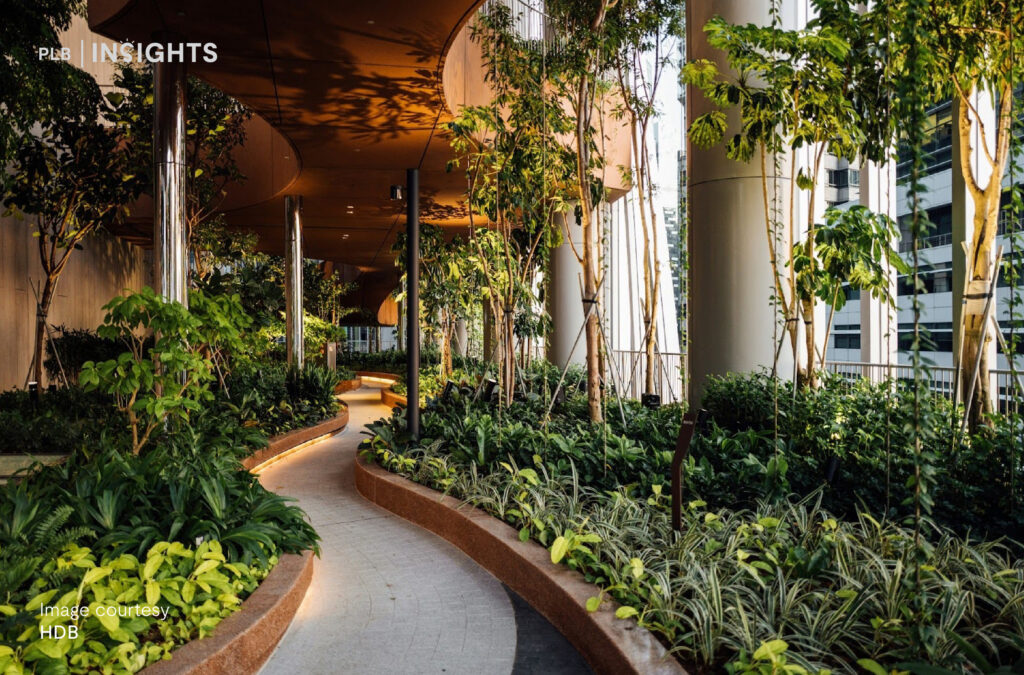
Promote Healthy Lifestyles
Developments with greenery and nature encourages residents to take part in more outdoor activities and exercises that incorporate either being immersed in or around nature more often. Taking up activities like walking, running, and different sports can promote both physical and mental wellness. Additionally, developments with cycling paths and walkways aren’t just great for residents who wish to improve their well-being, but also good for the environment as they reduce the reliance on cars.
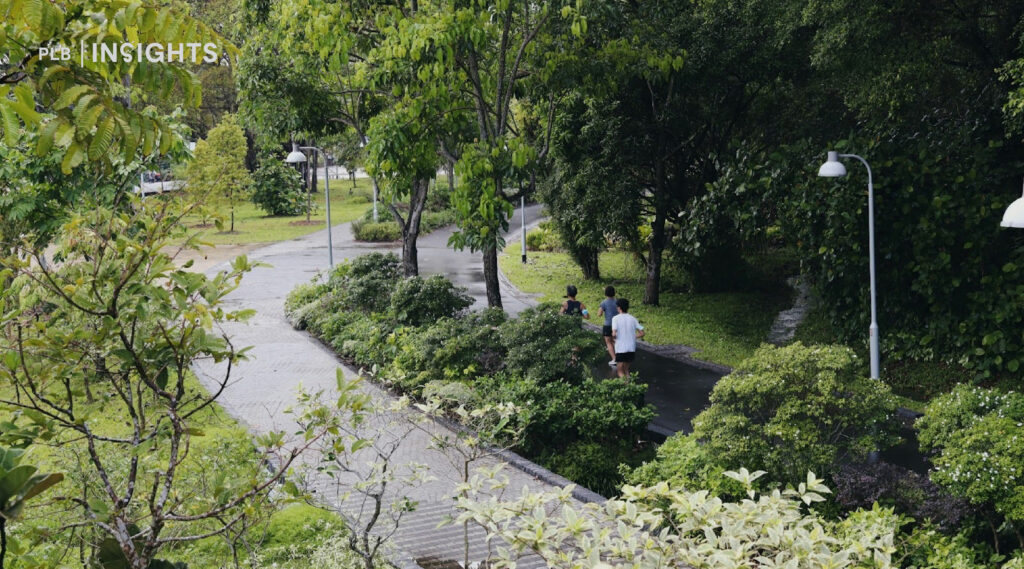
Build a Sense of Community
Developments typically include shared amenities and facilities including gyms, pools, gardens and playgrounds that can encourage social interactions. Apart from having social events within a community to foster social gatherings and interactions, these shared spaces can also serve as a spot for people to meet and get to know one another.

Closing Thoughts: Future of Wellness and Sustainability in Real Estate
As urbanisation continues to accelerate, with sustainability becoming an essential consideration to factor into real estate in Singapore, largely driven by Government initiatives and the growing awareness among individuals, developments will most likely start integrating more sustainable practices. This includes eco-friendly design elements, artificial intelligence and smart technology to create responsive environments that not only increase convenience and accessibility, but also prioritise resource management and energy efficiency. Moreover, when public awareness and education around sustainability rises, there can be a greater demand for eco-friendly materials and the integration of waste reduction practices and community centric designs.
Ultimately, the convergence of wellness and sustainability in Singapore’s property market can enhance the quality of life for all residents, promoting the well-being of people without forgoing the well-being of the planet at large.
Get In Touch With Us
Curious about properties that blend wellness and sustainability into their design? If you have any questions or concerns, feel free to reach out to us here. Our expert consultants are here to answer your questions and guide you through your property journey.
We’ll see you soon in our next one.







